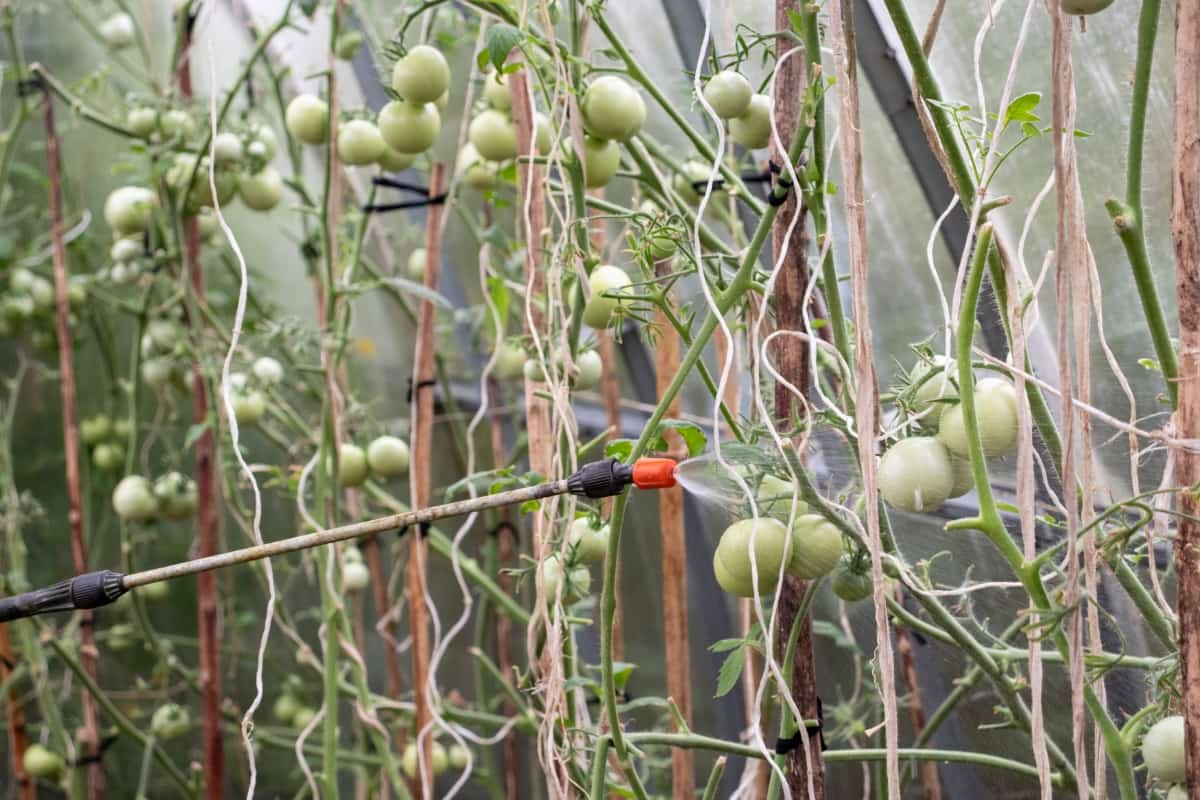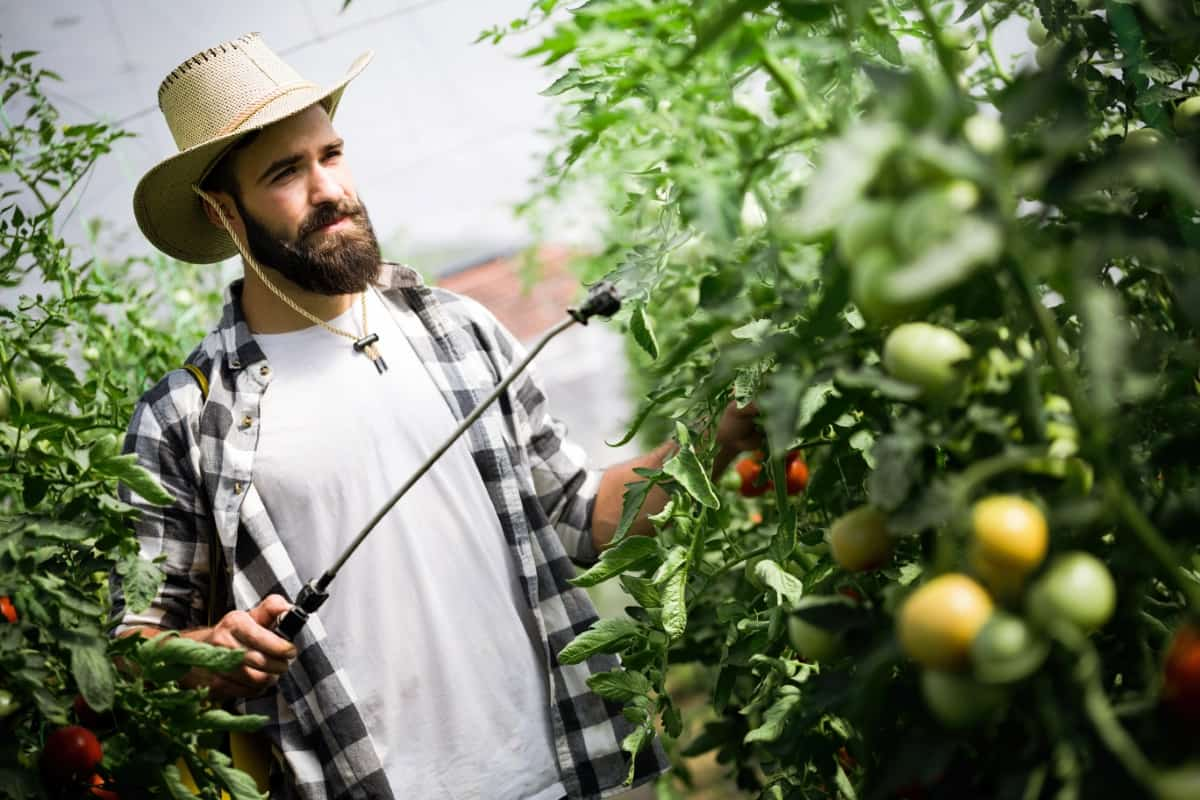Tomatoes are a commonly grown greenhouse crop due to their high value and consistent consumer demand. However, they are susceptible to various diseases, some of which can devastate crop yields and quality. Consequently, it is critical to have a robust understanding of these diseases, their causes, symptoms, treatment options, and prevention strategies to ensure a healthy and productive greenhouse tomato crop. This article explores the most prevalent diseases affecting greenhouse-grown tomatoes, highlighting ways to identify, treat, manage, and prevent them.

Greenhouse Tomato Plant Diseases
Common Tomato Plant Diseases in Greenhouse Cultivation
Fungal diseases are prominent, with Early Blight and Fusarium Wilt causing leaf spots and wilting, while Powdery Mildew can coat leaves and stems in a white, powdery substance. Similarly, root rot diseases, often due to overwatering or poor drainage, can stunt growth and potentially lead to plant death. Bacterial diseases are another serious concern, with bacterial spot, speck, and canker causing significant harm.
These infections often present as leaf spots, wilting, and cankers, reducing plant vitality and productivity. Viral diseases, often transmitted by insect vectors, can also plague greenhouse tomato plants. These diseases typically cause mottled or stunted leaves and can severely affect fruit yield and quality. Once a plant is infected, there’s no cure for these diseases, and the plant must be removed.
Preventing Tomato Plant Diseases in Greenhouse Farming
Regularly monitoring your plants and taking action on the first signs of disease can prevent more significant problems. Healthy soils, good ventilation, and proper watering practices are all necessary to maintain the health of your tomato plants. Encourage beneficial insects in your greenhouse, and control pests like aphids and whiteflies that can transmit diseases. A clean greenhouse with proper sanitation practices can help prevent many common diseases. Crop rotation is another effective way to break disease cycles.
Controlling Fungal Diseases in Greenhouse-Grown Tomatoes
Fungal diseases, including early blight, powdery mildew, and fusarium wilt, are among the most common diseases affecting greenhouse-grown tomatoes. Fungicides can be used as a last resort, but it’s essential to consider biological control agents and cultural practices first.
To effectively decrease fungal diseases, it is essential to employ appropriate ventilation techniques, optimize plant spacing for better air circulation, and water plants at ground level instead of using overhead methods. These measures have a substantial impact in reducing humidity levels and mitigating the risk of fungal infections. Crop rotation, resistant varieties, and soil solarization are other preventive measures.
Identifying and Treating Bacterial Infections in Greenhouse Tomato Plants
Bacterial infections, such as bacterial spot, bacterial speck, and bacterial canker, can be severe problems in greenhouse tomato production. Identifying these infections usually involves checking for distinctive symptoms like leaf spots, wilting, and cankers. Once identified, the infected plants should be removed and destroyed to prevent the bacteria from spreading. Bactericides, such as copper-based products, can be applied to control bacterial infections. Nonetheless, preventive measures are key, including disease-free seeds and maintaining proper sanitation.
Tomato Plant Viral Diseases in Greenhouse Settings
Tomato plants are vulnerable to various viral diseases such as the Tomato Spotted Wilt Virus and Tomato Mosaic Virus. These diseases often manifest as mottled or stunted leaves, severely affecting fruit yield and quality. Viral diseases are often spread by insect vectors, making pest management crucial. Once a plant contracts an infection, there is no remedy available, and it must be promptly extracted from the greenhouse. Using resistant varieties and regularly monitoring for pests can help prevent viral diseases.
In case you missed it: Best Organic Tomato Fertilizers: For Better Yield and Taste

Management Strategies for Tomato Plant Diseases in Greenhouse Production
Management of tomato plant diseases involves a combination of cultural, chemical, and biological strategies. Good cultural practices include proper sanitation, optimal plant spacing, regular monitoring, and using disease-free seeds. Chemical methods include the application of suitable fungicides, bactericides, or insecticides when necessary. Biological methods involve the use of beneficial organisms to control diseases. All these methods should be integrated and balanced to ensure a sustainable and productive greenhouse environment.
Preventing Powdery Mildew in Greenhouse-grown Tomatoes
Powdery mildew is a fungal infection characterized by a white, powdery layer on foliage and stems. To prevent this disease, reduce humidity in the greenhouse, increase ventilation, and avoid overhead watering. Resistant varieties of tomatoes and fungicides can also be used if necessary. Regular monitoring and early detection are key to preventing the spread of this disease.
Addressing Damping-Off Disease in Greenhouse Tomatoes
Damping-off, primarily caused by soilborne fungi like Pythium, Fusarium, and Rhizoctonia, leads to the decay of seeds or seedlings before or after they emerge. Prevention is the best approach, involving good sanitation practices, well-draining soil, controlled watering, and using treated or disease-free seedlings. Fungicides can be used if damping-off is noted, and infested plant debris should be removed immediately.
Minimizing Leaf Spot Diseases in Tomato Plants Grown in Greenhouses
Leaf spot diseases, such as Septoria and bacterial spots, manifest as spots on the leaves, reducing the photosynthetic area and weakening the plant. Regular monitoring, crop rotation, disease-free seeds, and resistant varieties are critical in minimizing these diseases. Applying copper-based bactericides and appropriate fungicides can also be beneficial in controlling outbreaks.
Treating Root Rot in Greenhouse Tomato Crops
Root rot, often caused by Pythium, Phytophthora, or Fusarium species, can result in stunted growth, wilting, and eventually plant death. Treating root rot involves removing and destroying affected plants, sterilizing the soil, and implementing proper watering practices to prevent overwatering and waterlogging. Fungicides and biological control agents can also manage root rot diseases.
Common Diseases Affecting Greenhouse Tomato Fruit Quality
Fruit rot diseases like anthracnose, blossom end rot, and sunscald can significantly reduce the quality and marketability of greenhouse tomatoes. Regular inspection, adequate calcium availability, and controlled watering can prevent these issues. Fungicides may control fungal fruit rots, while physical shading can prevent sunscald.
Fusarium Wilt Prevention and Management in Greenhouse Tomatoes
Fusarium wilt, which is triggered by the fungus Fusarium oxysporum, causes leaf withering and discoloration, potentially resulting in plant mortality. Prevention methods include crop rotation, resistant varieties, and good sanitation practices. Infected plants should be removed and destroyed. In persistent cases, soil sterilization or soil replacement might be necessary.
Dealing With Early Blight in Greenhouse-grown Tomato Plants
Early blight, attributed to the fungal pathogen Alternaria solani, induces dark lesions on the foliage, stems, and fruits. Implementing crop rotation, good sanitation, and balanced fertilization can help prevent early blight. Fungicides can be used for treatment but should be applied early in the disease progression for maximum effectiveness.
Effective Organic Solutions for Tomato Plant Diseases in Greenhouses
Organic solutions such as biological control agents (e.g., Trichoderma species, Bacillus subtilis) and natural products like neem oil, baking soda, and compost tea can effectively manage tomato plant diseases. Encouraging beneficial insects and organisms, maintaining soil health, and using resistant varieties can also provide organic solutions to disease issues. Regular monitoring, early detection, and prompt action remain vital in managing diseases in an organic greenhouse setting.
In case you missed it: 10 Natural Remedies to Cure Tomato Yellow Leaf Curl Virus

Conclusion
Tomato plant diseases can significantly challenge greenhouse production. Still, you can ensure a healthy and productive crop with a robust understanding of disease identification, prevention, and management. It’s important to remember that integrated, balanced, and sustainable approaches are the most effective in controlling these diseases.
- Feed Your Flock for Less: Top 10 Tips to Save on Chicken Feed
- Ultimate Guide to Ossabaw Island Hog: Breeding, Raising, Diet, and Care
- Hatching Answers: The Top 10 Reasons Your Chickens Aren’t Laying Eggs
- Eggs and Economics: Breaking Down the Cost of Raising Backyard Chickens
- Defend Your Greens: Proven Methods to Keep Iguanas Out of Your Garden
- Ultimate Guide to Cinnamon Queen Chicken: A Comprehensive Guide for Beginners
- Ultimate Guide to California Tan Chicken: Breeding, Raising, Diet, Egg-Production and Care
- Ultimate Guide to Marsh Daisy Chicken: Breeding, Raising, Diet, and Care
- 10 Types of Chicken Farming Businesses You Can Start for Profits